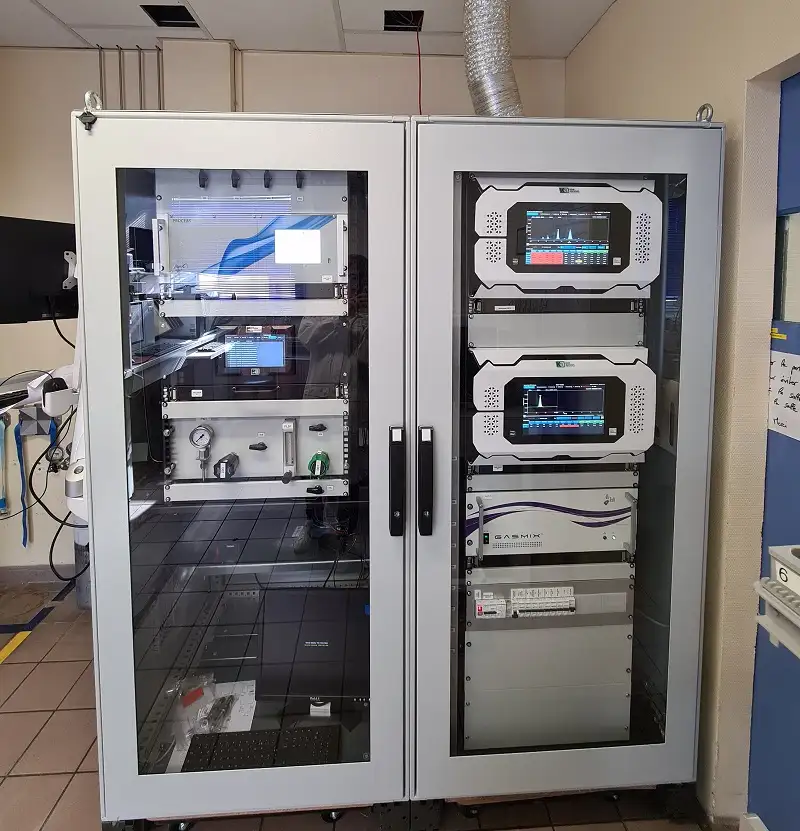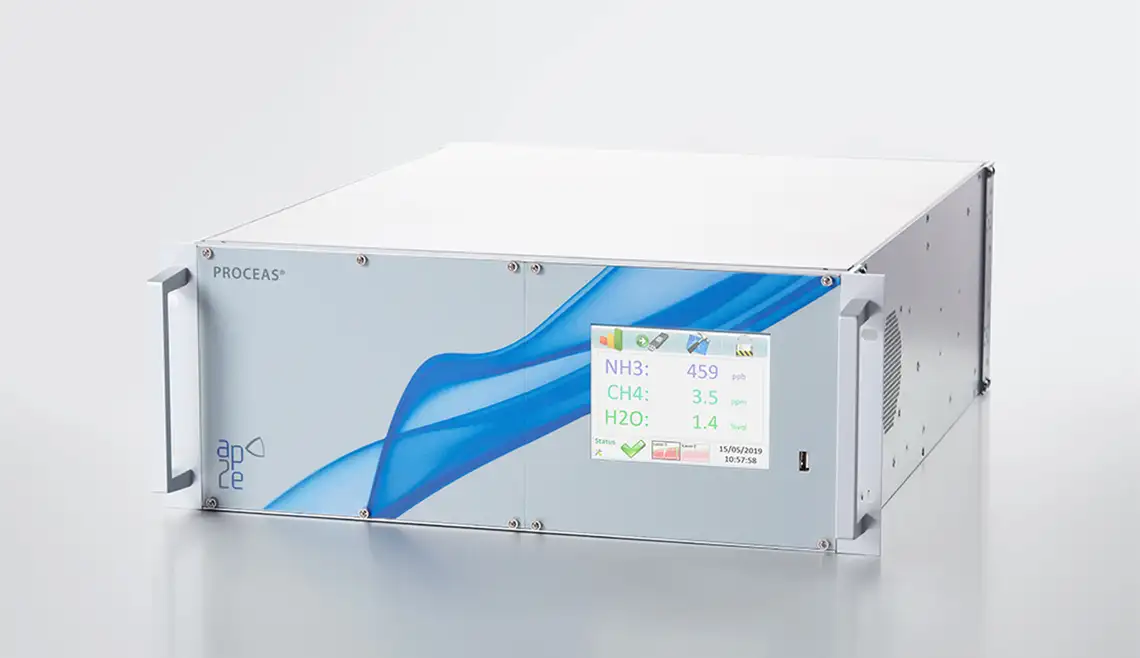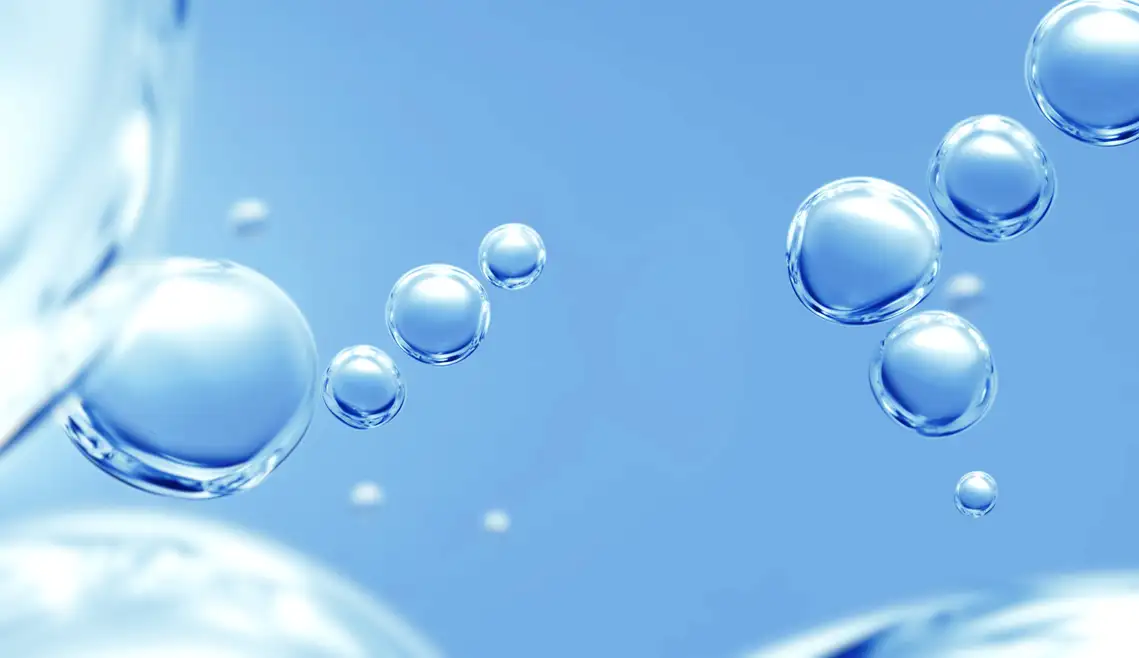
SGS measures impurities in hydrogen with ProCeas® gas analyzer
At its modern laboratory in Harfleur, SGS France relies on gas analysis technology from AP2E to monitor hydrogen purity. The challenge: a single technology cannot measure all hydrogen impurities to meet the requirements of the ISO 14687 standard. An AP2E ProCeas® gas analyzer was therefore coupled with a gas chromatograph. This allowed the impurities listed in the ISO standard to be measured completely, simultaneously and efficiently.
At a glance
| End customer: SGS France Integration partner: ANTELIA Industry: Hydrogen economy Application: Measurement of hydrogen purity in the laboratory Product: ProCeas® |
Hydrogen – an emerging market
Hydrogen constitutes an emerging and rapidly developing global market. Since the recent global climate agreements, the hydrogen market is expected to grow very rapidly in the coming years. Numerous countries are investing in hydrogen strategies for the energy transition. The issues involved here include:
- Reduction of greenhouse gas emissions
- Integration and combination with renewable energies
- Development of new ways to produce and store hydrogen
- The future of mobility
SGS is a worldwide leading testing, inspection and certification company, operating a network of 2,650 offices and laboratories. The company has quickly become aware of the growing demands relating to the development of new energies and must therefore constantly adapt to the market. To support its customers not only on the hydrogen quality side, but also along the entire hydrogen value chain, SGS offers industrial quality consulting, risk assessments, audits and inspections, as well as training for the hydrogen market.
State-of-the-art hydrogen analysis technologies
Against this background, SGS France planned to install a state-of-the-art hydrogen quality control bench at its Harfleur laboratory. The company chose a combination of advanced technologies described in the MetroHyVe publication: Arrhenius K et al. 2020, Development and evaluation of a novel analyzer for ISO14687 hydrogen purity analysis.
The ProCeas® device is already used in numerous laboratories to monitor the purity of hydrogen for mobility (grade D, i.e., a hydrogen purity of 99.97%). This unique gas analyzer is based on a combination of two patented technologies:
- OFCEAS (optical feedback cavity enhanced absorption spectroscopy): An infrared spectrometer that makes it possible to obtain very strong absorption peaks with very high selectivity, allowing the measurement of gases at ppb concentrations with limited cross interference.
- LPS (low pressure sampling): Thanks to the combination of a vacuum pump and a sonic nozzle, the pressure drops generated ensure a stable sampling flow and stable negative pressure in the measuring cell. This further improves the selectivity of the measurement, ensures a low sampling flow rate (limited sample volume) and guarantees very fast response times (acceleration of the gas).
Thanks to the combination of AP2E technologies with other measurement techniques, SGS experts can guarantee monitoring of hydrogen purity in accordance with national and international standards, including EN 17124, ISO 14687 and SAE J2719.
Image note: The image shows the state-of-the-art SGS laboratory in Harfleur and was provided by SGS France.
|
Maximum concentration of individual contaminants: |
|
|
Water (H2O) |
5 μmol/mol |
|
Total hydrocarbons, except methane (C1 equivalent) |
2 μmol/mol |
|
Methane (CH4) |
100 μmol/mol |
|
Oxygen (O2) |
5 μmol/mol |
|
Helium (He) |
300 μmol/mol |
|
Nitrogen (N2) |
300 μmol/mol |
|
Argon (Ar) |
300 μmol/mol |
|
Carbon dioxide (CO2) |
2 μmol/mol |
|
Carbon monoxide (CO) |
0,2 μmol/mol |
|
Total sulphur compounds, as a minimum H2S, COS, CS2 and mercaptans |
0,004 μmol/mol |
|
Formaldehyde (HCHO) |
0,2 μmol/mol |
|
Formic acid (HCOOH) |
0,2 μmol/mol |
|
Ammonia (NH3) |
0,1 μmol/mol |
|
Halogenated compounds [for example hydrogen chloride (HCl)] |
0,05 μmol/mol |
|
Total non-hydrogen gases (maximum 300 μmol/mol) |
|
Analysis of 14 different hydrogen impurities
SGS analyzers are fully integrated. This means that a single sample injection provides a complete set of analytical results. This significantly reduces turnaround times, costs and sample volumes.
“The analyzers can quantify 14 different impurities ranging from ppb to ppm, as required by ISO 14687 grade D. These new capabilities will support SGS Group customers in their commitment to carbon neutrality and strengthen the company’s position as a leader in hydrogen analysis,” says Arnaud Boille, Business Developer for Hydrogen at SGS France.
Etienne Smith from DURAG Sales & Service also provides a positive summary of the project: “This successful project confirms AP2E's position as the European leader in the measurement of impurities in hydrogen. Through our participation in the European MetroHyVe projects and through partnerships with international research and measurement laboratories, we follow the hydrogen market very closely and can actively shape its further development.”
For more information on SGS France's hydrogen analysis laboratory in Harfleur, visit the SGS website.




